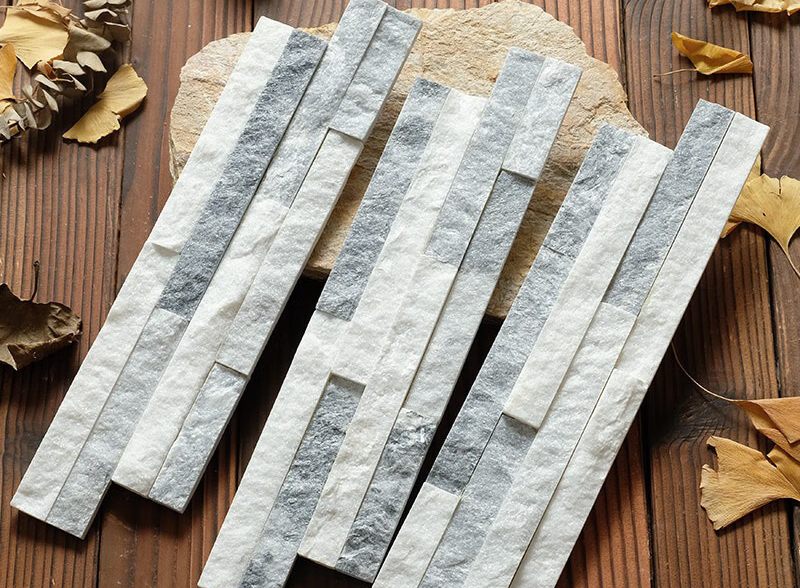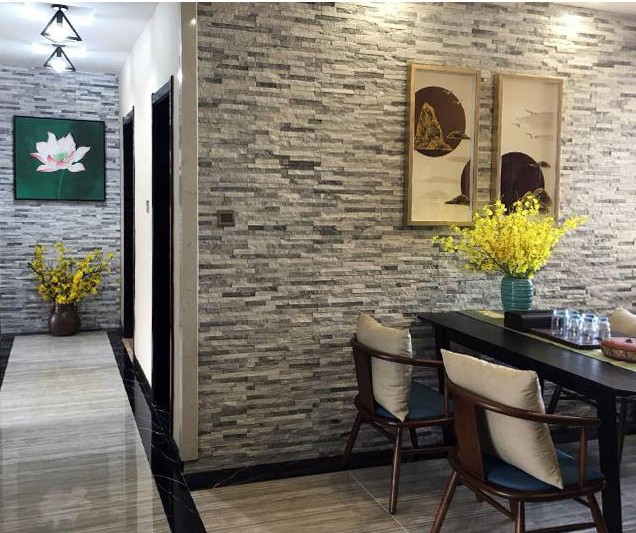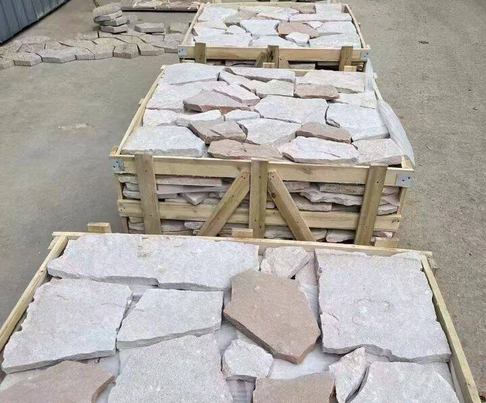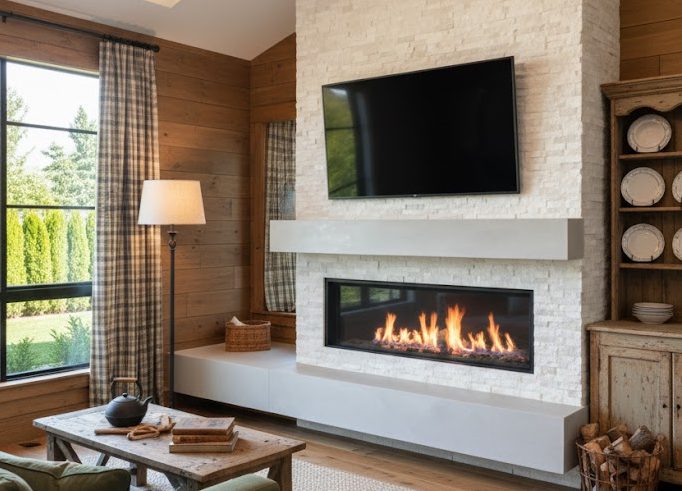Selecting the right stone can be complex if you’re unfamiliar with options like ledgestone or stacked stone. This guide clarifies what sets ledgestone apart, outlines its formats—panel or loose—and pinpoints optimal applications from facades and fireplaces to accent walls. Use these insights to match aesthetic goals with installation requirements, ensuring material choices support both design intent and project efficiency.
What is Ledgestone?
Ledgestone is valued by architects, builders, and procurement teams for its ability to deliver strong visual impact while meeting performance demands. Understanding its composition, aesthetics, and commercial uses helps you match the right product line to project specifications and avoid costly mismatches. Below, we outline the factors that make ledgestone a high-impact choice and where it delivers the most value in B2B environments.
Definition and Characteristics of Ledgestone
Thin, rectangular segments of natural or engineered stone are stacked horizontally to produce a rugged, textured surface with depth and tonal variation. Common materials include limestone, slate, quartzite, and sandstone, with porcelain-ledgestone options offering lower maintenance and tighter sizing tolerances. This versatility supports both modern facades and traditional renovations without compromising visual consistency.

Common B2B Applications for Ledgestone
On commercial exteriors, ledgestone cladding delivers durability and distinctive texture, boosting weather resistance and curb appeal in competitive real estate markets. In interiors, accent walls or fireplace surrounds in lobbies, offices, and hospitality spaces become instant focal points that enhance perceived value. Landscaping applications—such as retaining walls, water features, and pathways—gain both utility and a crafted look. For contractors, the modular structure accelerates installation and scales easily from decorative features to large developments, keeping schedules and budgets on track.
Industry Terminology and Benefits of Ledgestone
In trade contexts, “stacked stone” is the common synonym for ledgestone, especially in supplier catalogs and building specifications. Modular panel formats make installation more predictable than irregular stonework, cutting labor hours and simplifying planning. Natural cuts deliver authenticity, while manufactured options offer precise uniformity; both provide a durable, upscale finish that strengthens property appeal. For procurement leaders, these attributes go beyond aesthetics—reducing maintenance cycles, enhancing ROI, and reinforcing brand positioning through design quality.
The ‘Look’: Thin, Linear, and Textured
When choosing ledgestone, evaluate how its design and physical properties meet both visual standards and structural requirements. A well-matched profile can simplify installation, control costs, and align with your architectural objectives.
Thin Profile and Versatile Applications
With a slim build of 1–3 inches, ledgestone reduces weight, shortens installation time, and lowers labor expenses. Its minimal load impact suits retrofits and sites with limited capacity. This profile transitions seamlessly from interior feature walls and fireplaces to exterior façades and retail accents, enabling consistent design across multiple spaces without re-engineering.
Linear Arrangement and Clean Lines
Narrow rectangular strips stacked in tight horizontal layouts create visual rhythm that helps unify façades and interiors. This uniform geometry integrates easily into modern and transitional designs, offering a sophisticated yet unobtrusive backdrop. Compared with irregular cladding, the consistency streamlines visual planning, accelerating design approvals.

Textured Surface and Shadow Effects
Split-face surfaces with varied depths add tactile detail and dynamic shadow play under changing light, breaking up large expanses and preventing flatness. Texture elevates perceived value in residential and commercial spaces, delivering depth without adding bulk—an advantage for premium positioning.
Material Variety and Customization Options
Available in slate, quartzite, limestone, or manufactured equivalents, ledgestone comes in colors from subtle neutrals to bold contrasts, supporting corporate branding or regional styles. Selecting the right stone and finish ensures thematic consistency, meets durability needs, and reduces costly redesigns in diverse project portfolios.
Type 1: Ledgestone Panels (The DIY-Friendly ‘Z-Panel’)
For B2B buyers focused on delivering high-quality stone veneer solutions efficiently, ledgestone panels—often called Z-Panels—streamline installation while maintaining a crafted appearance. They help contractors and distributors boost project speed and retain the look of hand-laid stone. Understanding design features, labor efficiencies, durability options, and application flexibility allows you to quickly assess fit for your portfolio and client priorities.
What Are Ledgestone (Z) Panels?
Z-Panels are pre-assembled interlocking sheets of thin rectangular stones—slate, quartzite, limestone, or sandstone—layered horizontally to reproduce traditional ledgestone. The panel format sharply reduces site complexity and delivers a craftsman-style finish in far less time, making it a strong choice for residential upgrades and light commercial work where budgets and timelines are tight.

Ease of Installation and Labor Savings
Engineered interlocks allow general crews to install panels without specialist masons, cutting skilled labor costs and compressing schedules—a decisive advantage where speed drives client satisfaction and payment cycles. Uniform thickness and finish reduce sorting and trimming, limiting waste and rework, and protecting margins across multiple jobs.
Material Options and Durability
Choose between natural stone and manufactured panels. Natural stone delivers depth, weather resilience, and color stability under UV, justifying higher upfront costs with decades of performance. Manufactured panels lower unit price but risk pattern repetition and shorter lifespans outdoors; in harsh environments with limited maintenance, natural stone is the better long-term asset.
Applications and Versatility
Z-Panels suit interiors and exteriors, including feature walls, fireplaces, facades, and focal accents. Their adaptability supports a unified product line across varied projects, from compact residential remodels to light commercial enhancements, reducing the need to carry multiple specialized claddings.
Key Considerations for B2B Buyers
Confirm panel dimensions, stone type, finish, and supplier capacity to meet lead times and minimum orders. Match specifications to the client’s budget and durability targets. Reliable supply chains and consistent QC safeguard scalability; lapses can stall projects and damage downstream relationships, making supplier dependability as critical as the material itself.
Elevate Your Projects with Natural Ledger Stone
Add authentic texture and timeless beauty to your architectural designs with our easy-to-install, lightweight Kamień księgi. Perfect for contractors, distributors, and designers seeking durable, versatile stone solutions that bring lasting value and style.

Type 2: Loose Ledgestone (The Traditional Mason’s Choice)
Loose ledgestone is favored by experienced masons and design‑driven contractors for projects where authenticity is essential. It delivers a handcrafted finish panelized systems cannot match, making it a strategic choice for B2B buyers seeking distinctive texture, depth, and long‑term resilience. This section outlines its defining characteristics, value drivers, installation demands, and how it outperforms manufactured alternatives.
What is Loose Ledgestone?
Supplied as individual thin rectangular stone pieces in varying lengths and heights, loose ledgestone is installed horizontally in a stacked layout. Manual placement allows precise control over alignment, orientation, and color mix for a layered, genuinely natural appearance. Heights typically range from 1 to 5 inches, with natural edges and irregular dimensions creating a tactile, rugged quality suited to both rustic and contemporary designs. For procurement teams, this means no compromise on visual detail and a consistently high‑end finish across visible features.

Key Features and Benefits
Made from real quarried limestone, slate, quartzite, or sandstone, every piece offers unique tone and grain variations—turning material diversity into a design asset for clients seeking individuality over repetition. Installation can be dry‑stacked for a mortar‑free look or laid with thin joints for subtle definition; dry‑stacking delivers a continuous facade but requires more labor, making it best reserved for focal elements such as fireplaces, reception walls, or wainscoting. Its genuine stone composition resists weathering for decades, minimizing maintenance and protecting investment value.
Installation Considerations and Applications
Labor intensity is high—precise fitting and trimming of individual stones adds time, with dry‑stacking increasing offcut waste. This affects both scheduling and budgeting, so securing experienced crews is essential to safeguard margins. Loose ledgestone is common in premium projects demanding bespoke results, including custom fireplaces in luxury residences, accent walls in boutique retail spaces, or select exterior areas benefiting from intricate shadow play. Its durability supports outdoor use in exposed climates without risk of premature degradation.
How Loose Ledgestone Differs from Manufactured Panels
Unlike factory‑molded panels, loose ledgestone consists solely of genuine quarried stones assembled on site. This hand‑laid approach delivers richer texture and more organic variation—key drivers of client satisfaction in high‑value builds. It also surpasses manufactured panels in strength and weather resistance, extending service life and reducing upkeep. For buyers focused on premium aesthetics, longevity, and material integrity—whether for civic buildings, upscale hospitality, or custom homes—loose ledgestone remains the benchmark over any imitation product.
Where to Use Ledgestone (Fireplaces, Walls, Backsplashes)
Ledgestone offers both visual impact and long-term durability, making it a flexible choice for interior and exterior specifications. For procurement teams, the priority is matching product performance and aesthetics to the design brief while meeting lifecycle and maintenance targets. Below are high-value applications where ledgestone consistently delivers returns in commercial and residential developments.
Fireplaces
Fireplace surrounds in hospitality lounges, multifamily common areas, and luxury residences gain visual weight and depth from ledgestone’s dimensional surface, creating a natural focal point suitable for both modern lofts and rustic cabins. Natural limestone and splitface profiles handle high heat without warping or discoloration, meeting stringent safety and code requirements, while manufactured variants provide uniform coloring and lower upkeep. Sourcing from suppliers with proven batch consistency minimizes color variation across multiple units and keeps fast-turnaround projects on schedule.

Accent Walls
In commercial lobbies, retail interiors, and premium offices, ledgestone accent walls can quickly elevate perceived value. Variations in thickness and a wide color palette let designers tune the impact to align with brand identity. Natural stone delivers authentic texture, while porcelain reduces weight and maintenance. Selecting the finish early curbs post-installation touch-ups and protects margins in high-traffic areas, where durability is critical.
Backsplashes
For backsplashes in commercial kitchens, hospitality suites, and high-end residential units, ledgestone adds texture while meeting the demands of moisture-prone areas. Porcelain variants excel when easy, hygienic cleaning is essential. Their resistance to stains and moisture reduces replacement cycles, and specifying products with verified performance records limits liability while supporting long-term client satisfaction.
Additional Uses: Exterior Cladding and Landscaping
Outside, ledgestone’s weather resistance and organic look make it ideal for cladding retail facades, hotel columns, and framing landscaped terraces in multifamily complexes. It visually links buildings to their surroundings, enhancing curb appeal and property value. Low maintenance demands reduce facility upkeep costs, making it a sound choice for developers seeking enduring exterior finishes that retain their appearance under sun, rain, and temperature swings.
The Stone Guru’s Take: Why It’s So Popular
Ledgestone has become a preferred choice in both residential and commercial projects because it delivers more than visual impact. It gives designers flexibility, helps contractors control labor costs, and supports sourcing managers in balancing budgets with market appeal. These advantages explain why it consistently appears in building specifications and procurement lists.
Aesthetic Versatility and Design Appeal
The multi-depth surface of ledgestone creates shadows and texture that add instant dimension to walls or facades. On fireplaces or exterior columns, it delivers a striking finish without ornate detailing, working equally well in modern or rustic settings. Its organic warmth pairs seamlessly with metals, glass, or wood, and for procurement teams, this adaptability allows a single SKU to suit diverse projects, lowering inventory variety while meeting different client tastes.
Material Options and Customization
Natural options—limestone, slate, quartzite, sandstone, marble, and travertine—provide distinct colors and patterns, giving projects authentic stone character while aligning with regional preferences or durability requirements. Manufactured ledgestone, including porcelain panels, expands finish choices and standardizes sizing, helping control costs without compromising on look. Bulk orders can be tailored in both material and format, ensuring brand palettes remain consistent across multiple locations.
Ease of Installation and Labor Efficiency
Pre-mounted panels and thin veneers accelerate installation compared to hand-setting individual stones, cutting labor hours and reducing disruption from weather delays. This efficiency lets contractors complete projects faster, while sourcing managers can use shorter install times to sharpen bid competitiveness without sacrificing margin.

Durability and Low Maintenance
Natural stone ledgestone withstands sun, rain, and temperature shifts, making it effective for exterior cladding or high-traffic interiors. Quality manufactured options, such as porcelain-faced panels, add stain resistance and simplify cleaning. This combination keeps long-term operational costs low for facilities while giving procurement a solid value proposition to present to clients.
Functional and Market Advantages
With adaptable sizes and formats, ledgestone can unify design themes across accent walls, backsplashes, fireplace surrounds, columns, and planter walls, streamlining sourcing for multi-zone projects. Its strong visual impact can lift perceived property value and support premium pricing. For distributors and contractors, it’s a market differentiator that appeals to design-driven buyers while strengthening bid portfolios.
Ledgestone vs. Fieldstone (A Quick Comparison)
Commercial projects benefit from selecting stone types that align with installation efficiency, design integrity, and supply predictability. The table below outlines the functional and aesthetic distinctions between Ledgestone and Fieldstone, giving procurement managers and design leads clear parameters to guide material choice.
| Criteria | Key Considerations |
|---|---|
| Source and Shape | Ledgestone is quarried, precision-cut into flat rectangular units, ensuring clean alignment and accelerating installation. Fieldstone is harvested in naturally irregular shapes, delivering rustic character but requiring on-site shaping and extended labor time. |
| Appearance and Aesthetic Appeal | Ledgestone’s linear profile and consistent thickness support modern, tight-joint installations. Fieldstone’s varied colors, textures, and visible mortar joints reinforce traditional charm and relaxed layouts. |
| Installation and Project Scale | Uniform Ledgestone pieces cut labor costs, making them practical for accent walls or smaller features. Fieldstone’s complexity suits large-scale builds such as perimeter walls or expansive landscape projects where visual variation is a priority. |
| Color Range and Material Consistency | Ledgestone offers a stable range of neutrals—white, gray, beige—maintaining consistency across installations. Fieldstone brings diverse earthy tones, ideal for projects seeking a distinctive, hand-crafted appearance. |
| B2B Sourcing and Commercial Considerations | Ledgestone is frequently supplied in manufactured veneer panels, streamlining procurement, transport, and labor budgeting. Fieldstone requires specialist masonry skills and carries greater variability in supply, aligning with high-end niche projects despite elevated installation costs. |
FAQs About Ledgestone
These answers address practical factors relevant to distributors, contractors, and designers assessing ledgestone for upcoming projects. Understanding these points early helps avoid costly specification errors and ensures the right product is selected for client needs.
What is the difference between ledgestone and stacked stone?
Ledgestone panels use uniform, flat slices of natural stone that interlock seamlessly, avoiding visible grout lines. This precision speeds installation and supports modern and transitional aesthetics, while ułożony kamień relies on irregular shapes laid manually—often showing mortar joints for a rugged, rustic feel. From a procurement standpoint, ledgestone streamlines labor budgeting and reduces variability, whereas ułożony kamień demands more artisan work and extended on‑site time. Select based on client style goals and labor capacity.
What is ledgestone made of?
Ledgestone is cut from quarried slate, quartzite, or marble and sliced thin for panel assembly. Each piece is bonded with high‑strength epoxy to a backing board, keeping stones secure for years. The natural composition delivers consistent texture and authentic color, supporting long‑term performance, enhancing resale value, and meeting premium design requirements without risk of fading or delamination.
What are ledgestone panels?
Panels group thin stone pieces on a backing with interlocking edges, typically in 6″ x24″ formats and weighing 8–13 pounds per square foot, enabling quick alignment and minimal site adjustments. This format shortens installation time, reduces reliance on specialized masonry skills, and eliminates grout‑cleaning maintenance—helping meet tight schedules and delivering an easier experience for end clients.
Is ledgestone good for exterior use?
Natural stone in ledgestone panels resists weathering, but the system is not a standalone waterproof barrier. In outdoor or damp settings, installers should add moisture barriers and flashing, then seal the stone surface to protect against staining. Properly installed, it performs well on exterior facades, garden walls, and fireplaces exposed to the elements, offering durability with strong visual impact.
Is ledgestone expensive?
Ledgestone materials fall into the moderate‑to‑high price range due to genuine stone content and manufacturing precision. Its lightweight panel design accelerates installation, cutting labor hours and overall project costs. Compared with full‑thickness stone, it brings structural ease and faster turnaround, offsetting higher unit prices with savings in setup and labor—delivering lasting quality and strong client satisfaction.
Key Takeaways for Early-Stage Ledgestone Buyers
Ledgestone’s clean, horizontal profile and rugged texture suit both modern facades and traditional builds. Available as interlocking panels or loose pieces, it combines strong visual impact with durability and installation flexibility. In early‑stage planning, align thickness, material type, and finish with structural limits and design objectives—panels accelerate tight schedules, while loose stone delivers authenticity for premium projects. Secure supply from proven vendors to protect budgets, meet deadlines, and maximize ledgestone’s lasting value across applications.

